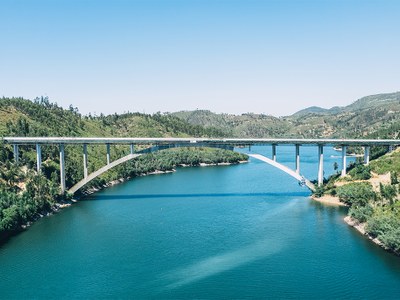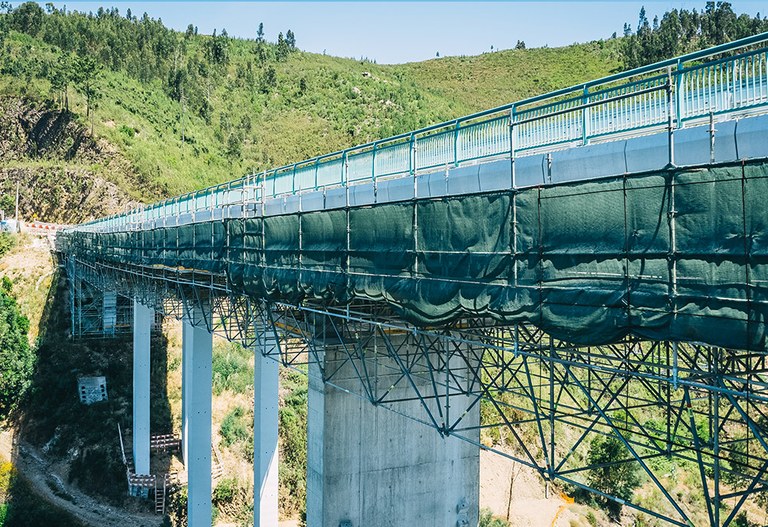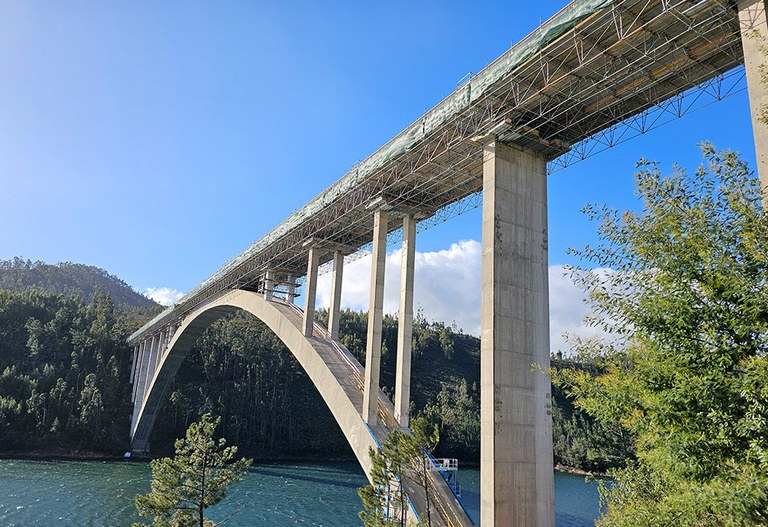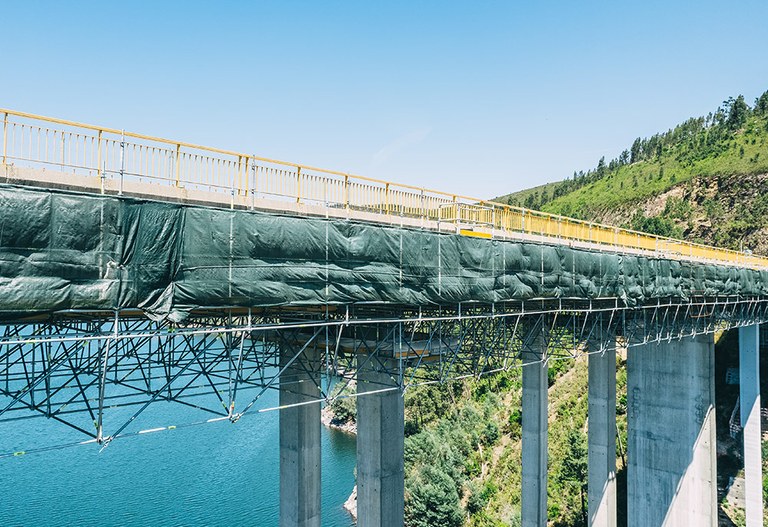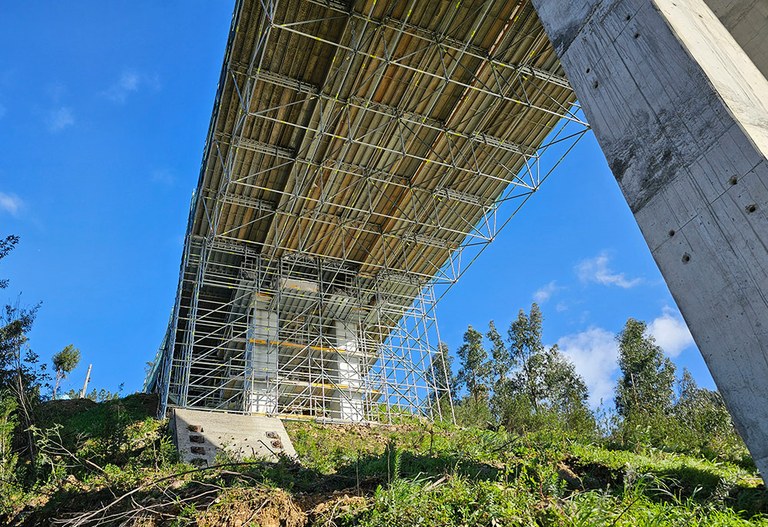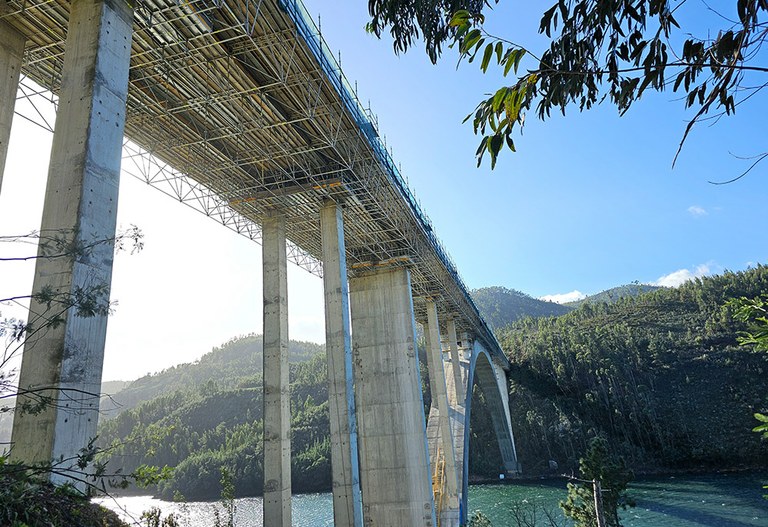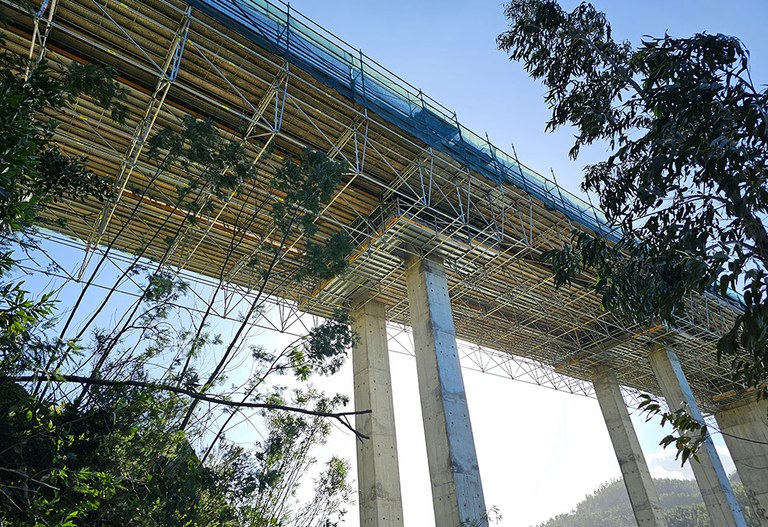Collaborative Engineering at the Service of the Zezere Bridge Repair
With a total length of 385 metres, a central arch spanning 224 metres, and spans ranging from 14 to 21 metres, this structure plays a key role in the region's connectivity. The recent structural repair and reinforcement intervention, led by VSL with the collaboration of ULMA Construction, stands out as an example of teamwork in engineering.
The work carried out on the bridge included reinforcement through the tensioning of new prestressing cables, as well as the replacement and repair of the supports.
From the early stages of the project, ULMA collaborated with VSL to assess the feasibility of a solution that would ensure full access to the underside of the bridge deck — a critical requirement for the correct execution of reinforcement and reparation tasks. Early-stage planning made it possible to develop a technical proposal tailored to the bridge’s geometric features, the demanding environmental conditions, and with no disruption to traffic flow.
ULMA’s solution consisted of a continuous working platform, built with the BRIO Multidirectional Scaffolding system in a cantilevered and suspended configuration from the deck of the bridge. This 12-metre-wide platform was deployed across 19 spans of approximately 20 metres each, providing full access to all intervention areas without interrupting circulation. Additionally, ULMA designed and supplied bespoke formwork solutions for the execution of edge beams and concrete structures associated with the bridge reinforcement.
Throughout the execution phase, key factors were considered, such as high wind exposure due to the bridge’s elevated position over the river and the limited load-bearing capacity of the deck, which influenced the placement of the anchor points for the suspended scaffolding system. The flexibility of the BRIO scaffolding allowed adaptation to the complexities of the existing infrastructure and ensured large working areas without interfering with structural elements.
The site environment, with limited storage space, required precise logistical planning. ULMA organized phased shipments of materials and ensured a sustained assembly rate of one span per week. In total, 280 tons of BRIO Multidirectional Scaffolding were installed, meeting the established deadlines and guaranteeing high safety standards at every stage.
The technical solution developed by ULMA was the result of a continuous collaborative process between the engineering, logistics, and assembly teams, working closely with VSL. Technical meetings made it possible to adapt the proposal to the environmental and structural constraints, achieving a functional scaffolding geometry, compatible with the existing infrastructure and with the needs of the future intervention.
“ULMA has lived up to the positive experiences we’ve had in the past, and we are confident we will work together again on future projects”, said Eduardo Vilaça, Site Manager at VSL.
In this video of the project you can see perfectly the scaffolding solution offered by ULMA. Do not miss it!


